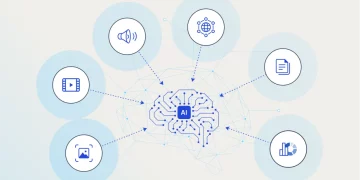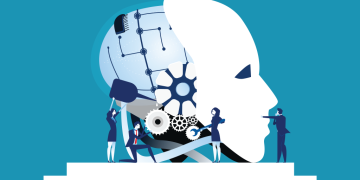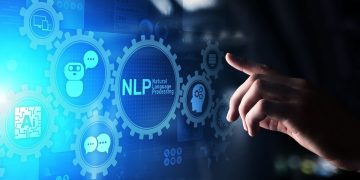Natural Language Processing (NLP) is one of the most exciting and rapidly evolving fields in artificial intelligence (AI). It focuses on enabling machines to read, understand, and generate human language, bridging the gap between computers and human communication. Over the past decade, breakthroughs in NLP have brought AI closer to understanding the intricacies of human language, including grammar, context, and even emotional nuances. However, despite these advancements, a fundamental question persists: Can AI truly “understand” emotions in language the way humans do?
In this article, we’ll explore the latest developments in NLP, the growing ability of AI to recognize and process emotions, and the challenges it faces in fully comprehending human sentiment.
1. The Evolution of NLP: From Rule-Based Systems to Deep Learning
The journey of NLP has been long and transformative. Initially, early NLP models relied on rule-based systems, where human experts manually coded language rules for tasks like parsing sentences and identifying parts of speech. These systems were relatively rigid, requiring vast amounts of handcrafted rules and knowledge bases, and they struggled with ambiguity and the complexity of real-world language.
The real breakthrough came with the introduction of machine learning and, later, deep learning techniques. In particular, neural networks and architectures like Recurrent Neural Networks (RNNs) and Long Short-Term Memory networks (LSTMs) enabled models to learn from vast amounts of data, vastly improving performance on tasks such as sentiment analysis, translation, and summarization.
a. The Rise of Transformer Models
One of the most significant advances in recent years has been the advent of transformer models, which have revolutionized the field of NLP. Introduced by Vaswani et al. in 2017 with the paper “Attention Is All You Need”, the Transformer architecture replaced RNNs and LSTMs for most NLP tasks. Transformers, particularly models like BERT (Bidirectional Encoder Representations from Transformers) and GPT (Generative Pretrained Transformers), excel at understanding context and handling long-range dependencies within text.
Transformers work by using attention mechanisms that allow the model to focus on different parts of a text sequence, making them highly effective in understanding the meaning behind sentences, paragraphs, and even entire documents.
Impact on Emotional Understanding:
- Context Awareness: By capturing the full context of a sentence or passage, transformers can better understand emotional undertones, sarcasm, and other subtle cues that humans use to express feelings.
- Improved Sentiment Analysis: With the ability to analyze large bodies of text, transformers are already outperforming older models in tasks like sentiment analysis, making them more capable of detecting emotion in text.
2. Emotion Recognition in Text: Sentiment Analysis and Beyond
One of the first and most important ways AI began to “understand” emotions in language was through sentiment analysis, a technique that involves classifying text as expressing positive, negative, or neutral sentiments. However, sentiment analysis is far from perfect. The subtleties of human emotion—such as irony, sarcasm, and mixed emotions—are difficult to capture with simple positive/negative classification.
a. Fine-Grained Emotion Detection
Recent NLP models go beyond basic sentiment analysis by focusing on fine-grained emotion detection. Rather than simply classifying text as positive or negative, these models try to identify a wider range of emotions, such as joy, sadness, anger, surprise, and disgust. This task is much more complex and requires models to understand the context in which emotions are being expressed.
For example, in customer service chatbots or social media sentiment analysis, understanding the difference between a frustrated customer (anger) and a satisfied customer (happiness) is critical. With the development of multi-label classification, newer models are capable of detecting multiple emotions within a single sentence or paragraph.
Impact on Emotional Understanding:
- Complex Emotion Recognition: Advanced NLP models can detect complex emotional expressions in text, including when multiple emotions are mixed together in a single piece of content.
- Real-time Emotional Intelligence: AI systems can now respond to emotional cues in real time, making them more effective in applications like virtual assistants and chatbots that require an understanding of emotional states to engage with users effectively.
Examples:
- IBM Watson Tone Analyzer: Watson’s Tone Analyzer API can assess various emotions in text, such as joy, fear, sadness, and anger, and it is often used in customer support, helping businesses gauge and respond to the emotional tone of customer interactions.
- BERT-based models in Sentiment Analysis: Using transformers like BERT, companies like Google and Microsoft have built advanced sentiment analysis tools that understand a broader range of emotional expressions in text.
3. Emotion and Empathy in Conversational AI
Building systems that can recognize emotions is one thing, but creating systems that can empathize with users is an entirely different challenge. Empathy in human communication goes beyond simply understanding a person’s emotions; it involves responding in a way that acknowledges, validates, and resonates with those emotions.
While current AI models are still far from being able to fully replicate human empathy, advancements in NLP have made it possible for AI systems to recognize emotional states and adjust their tone and responses accordingly.
a. Affect and Response Generation
The field of affective computing is focused on developing systems that can respond to emotions in a way that simulates empathy. These systems can adjust their language, tone, and sentiment in response to the emotional state of the user. For example, a chatbot that recognizes a user’s frustration can use calming language to defuse the situation, while a virtual assistant can express enthusiasm when interacting with an excited user.
One key breakthrough in this area is the development of emotion-aware dialogue systems, where the AI doesn’t just recognize emotional cues, but also uses this information to generate emotionally appropriate responses.
Impact on Emotional Understanding:
- Personalized Interactions: AI systems can now interact with users in a more personalized way by considering their emotional states, potentially improving customer service, therapy applications, and other areas requiring emotionally intelligent communication.
- Emotional Calibration: AI can modify its conversational style (formal vs. informal, supportive vs. direct) based on the user’s emotional context, creating more engaging and meaningful interactions.
Examples:
- Replika: An AI chatbot designed to converse with users in an emotionally intelligent way. It tailors its responses based on the emotional tone of the user’s messages, offering companionship and empathy to users dealing with loneliness or stress.
- Woebot: A chatbot designed for mental health support, Woebot uses NLP and emotional recognition to engage users in therapeutic conversations, helping them cope with stress, anxiety, and depression.

4. Challenges: The Limits of AI’s Emotional Intelligence
Despite these advancements, AI’s ability to truly “understand” emotion is still limited by several factors:
a. Lack of True Consciousness or Experience
Although NLP models can analyze and predict emotional content, they don’t experience emotions the way humans do. AI’s understanding of emotion is purely computational—it identifies patterns in language but doesn’t “feel” anything. For instance, a model might recognize sadness in a sentence like “I feel lonely,” but it doesn’t actually comprehend the weight of loneliness as a human would.
b. Ambiguity and Context
Language is inherently ambiguous, and emotions can be expressed in subtle ways that AI models sometimes miss. Sarcasm, humor, or cultural differences can lead to misinterpretation. A sarcastic statement like “Oh great, just what I needed” might be flagged as positive, even though it expresses frustration.
c. Ethical Concerns
The use of emotion recognition technologies also raises ethical questions, particularly around privacy and manipulation. For example, systems that detect and respond to emotions could be misused to manipulate users in advertising, politics, or even personal relationships.
5. The Future: Toward Emotionally Intelligent AI
Looking ahead, NLP and AI will likely continue to improve in their ability to recognize and respond to human emotions. While AI may never truly “feel” emotions, the ability to simulate understanding will make interactions with machines more natural, empathetic, and effective.
- Multimodal Emotion Recognition: Future advancements will likely involve integrating not just text, but also voice tone, facial expressions, and body language to build more comprehensive emotional profiles. This will allow AI to respond even more accurately to the emotional states of users.
- AI in Mental Health: As AI systems become better at understanding and responding to emotions, they could play an even larger role in mental health, offering emotional support and even acting as companions for people dealing with stress, depression, or anxiety.
Conclusion: Can AI Truly “Understand” Emotions?
While AI has made impressive strides in recognizing and responding to human emotions through NLP, it still falls short of human-level emotional intelligence. Current systems can identify emotional cues and adjust their responses based on context, but they lack genuine understanding or empathy. AI “understands” emotions in a computational sense, but it does not experience them.
As research in NLP and affective computing progresses, we may see systems that can engage with humans in more emotionally intelligent ways. However, the true essence of emotional understanding—rooted in human experience—remains beyond the reach of machines, for now.











































